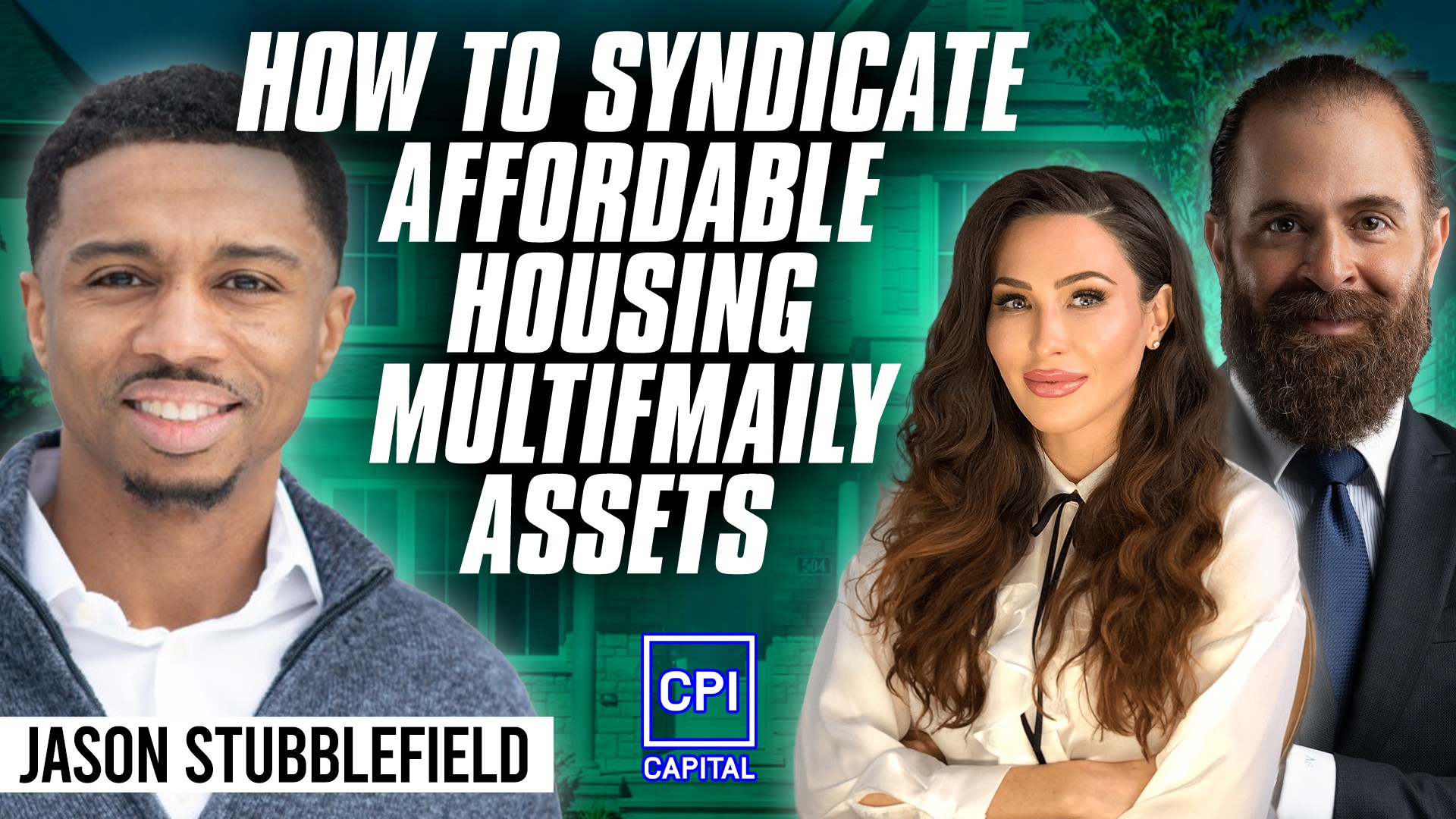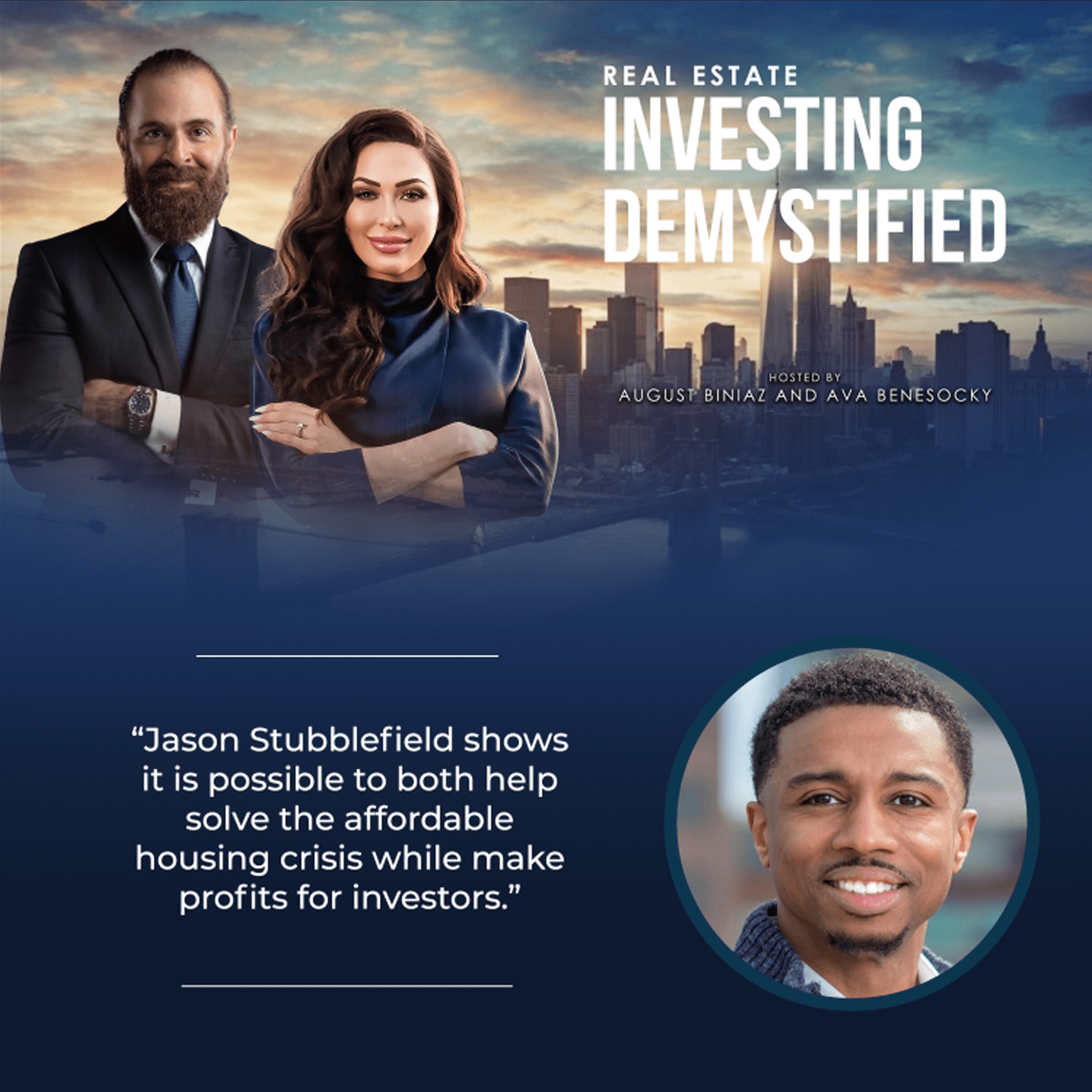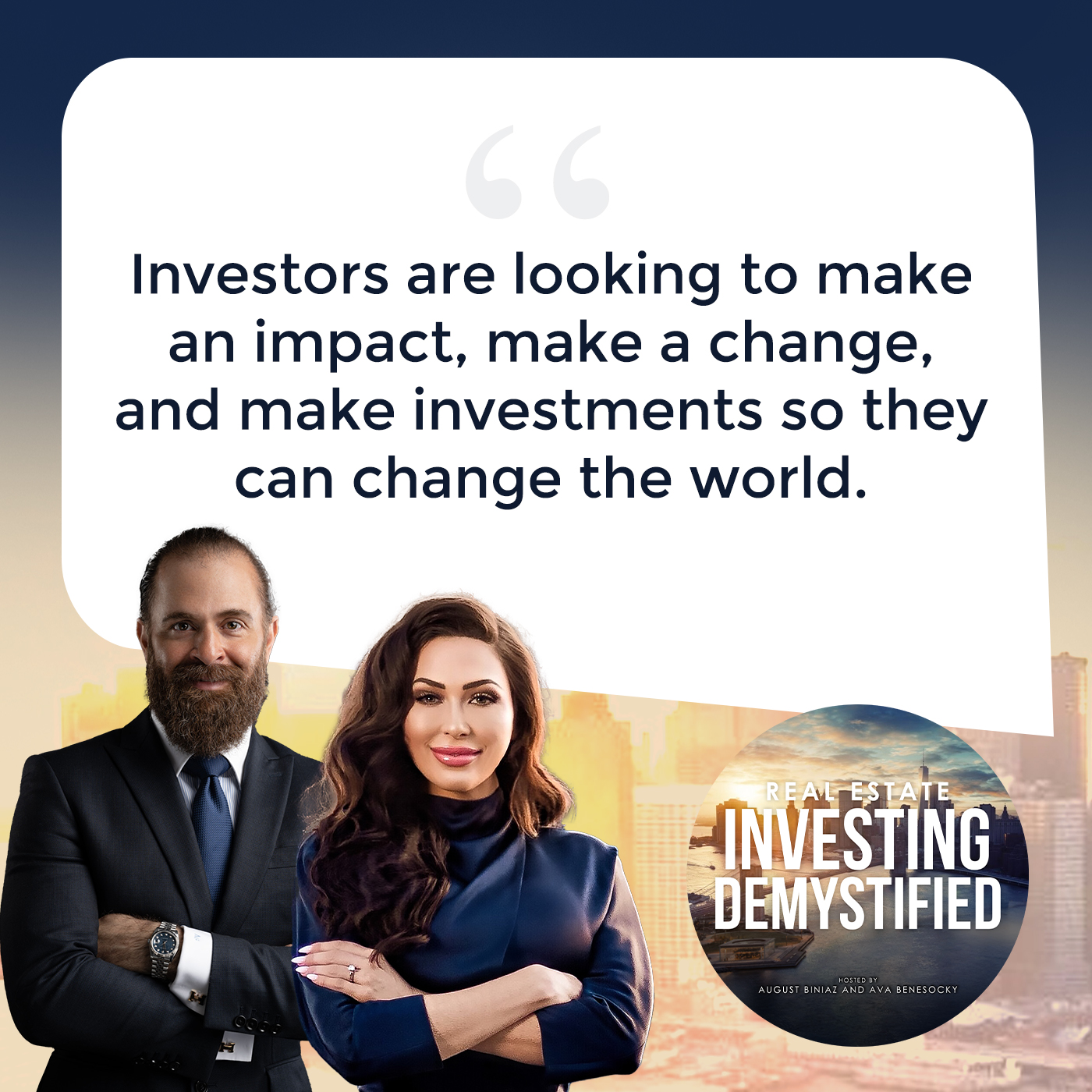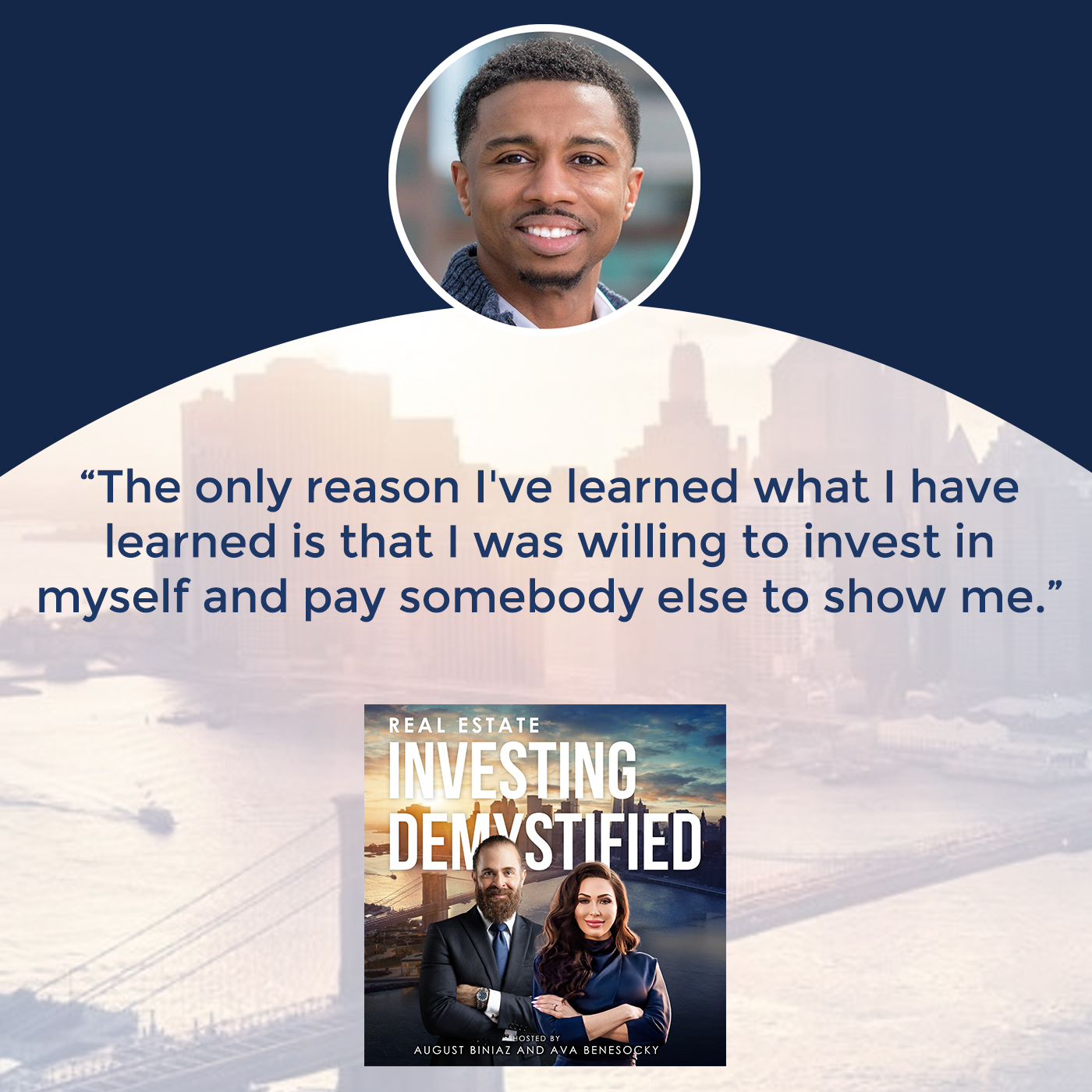Charity is charity, and investments are investments. But what if we can combine them both and create real service for clients while also getting returns? What if we can make affordable housing actually possible? Join your hosts, Ava Benesocky and August Biniaz, as they interview real estate investor Jason Stubblefield. Jason tells his story of how he got out of the rat race, earned a six-figure income, and how he is now dedicated to syndicating affordable housing multifamily assets. Yes, it’s possible! But it takes a lot of wits and a lot of work, and that’s among the many golden nuggets that Jason shares today. Growing up in a lower-income bracket family, Jason knows what it’s like to barely afford a nice home and has, therefore, always become mindful of his tenants. He knows a change can be possible, and he’s here to put his dream to reality. Tune in now and learn how to make an impact as an investor and contribute to this industry change!
Get in touch with Jason Stubblefield:
LinkedIn: https://www.linkedin.com/in/jasonstubblefield/
Website: https://snscapitalpartners.com/
If you are interested in learning more about passively investing in multifamily and Build-to-Rent properties, click here to schedule a call with the CPI Capital Team or contact us at info@cpicapital.ca. If you like to Co-Syndicate and close on a larger deal as a General Partner, click here. You can read more about CPI Capital at https://www.cpicapital.ca/
#avabenesocky #augustbiniaz #cpicapital
—
Watch the episode here
Listen to the podcast here
Important Links
- Jason Stubblefield
- The Alchemist
- The Science of Getting Rich
- Facebook group – The Multifamily Code
- https://www.SNSCapitalPartners.com/
About Jason Stubblefield

How To Syndicate Affordable Housing Multifamily Assets With Jason Stubblefield
Welcome back, everybody.
Let’s get onto the show. We planned to bring our guests for a long time. I’ve been following this young man and I’m impressed with what he has accomplished. I feel like he’s a good friend. We’ve had multiple conversations, but we’re looking to having a great interview and learning more about Jason.
I’m going to start off with his bio. Jason Stubblefield has been investing in real estate for over ten years. He’s started with single-family homes and has since moved into the multifamily real estate space. He scaled his portfolio to over 1,000 multi-family units in just a few years. Since starting his company, Jason has always been mindful of the tenants that he serves. That concern led him to transition his company into the affordable housing space. His company is now devoted to helping solve the affordable housing crisis while maintaining strong returns for his company and his investors.
The super important sentence right there is solving a problem but also making profits for investors.
Prior to becoming a full-time multi-family entrepreneur, Jason spent over eleven years in software development and has a Bachelor of Science Degree in Computer Science from the University of Memphis. He also is a United States Marine Corps veteran.
We got a real Marine, not people complimenting each other, “Man, you are a Marine.” He’s a real Marine.
We believe this interview with Jason will bring great value to real estate investors looking to invest in affordable housing. Welcome to the show, Jason. Thanks so much for being here.
Welcome to the show, Jason.
Thank you for having me. Thank you for the warm introduction. I’m not looking as spiffy as August, but don’t change it at all. I’m glad to be in the presence of both of you also. Thanks for letting me join you for a few minutes.
We’d love to start off. Could you tell us about your background and your start in real estate?
You summed it up pretty well with that introduction there. I started off with humble beginnings like a lot of people. I was trying to find a way out and trying to gain some income. I joined the Marine Corps and left that. I decided I needed to get an education. Computer Science was the major I chose. I chose that major because it was one of the few things I knew that I could graduate with, do something, and make some money.
I was then in a corporate career. I thought that was living the American dream and I was going to be okay. I then realize I was short-sighted in that. A lot of other people say, “You make a six-figure income or whatever, but where’s your long-term retirement at?” How do you get out of this cycle of making some money, spending some money, and having life events happen? It’s the rat race. I’m trying to escape that and that led me into real estate. I then landed on multifamily.
Multifamily was one of the avenues that allowed me to expedite the time that I thought was going to take me to be able to leave my job and have some sort of financial independence. Thankfully, that happened. That led me here. Also, I’m pretty sure we’ll touch on affordable housing a little bit and what I’m doing with that. That’s me in a nutshell. I’m trying to make my little dent in the world here. That’s it.
To touch on what you mentioned there about single-family and multifamily, what was the appeal of multifamily? A lot of time investors don’t understand how multifamily works and how are they purchased because of the cap rate and the revenues it produces. Whereas single-family is purchased on the comparable approach. Buying a multifamily community or building is like buying a small business, so you’re looking at the income it’s producing. Talk to us about when did a light bulb go off when it comes to multifamily or the difference between multifamily and single-family. Talk to us about the appeal.
I started in single-family and it brought down the time. I had a small single-family portfolio and looked at how much money I had coming in and said, “How many of these single families am I going to need before I could leave my job and retire?” It was depressing. I was like, “It’s going to take me twenty years or something at the rate I was going.”
Multifamily was appealing to me because it has expedited everything. Multifamily is like buying a business. You can buy a business and sell it at some sort of multiple. What we’re doing here at multifamily is buying and then selling at a multiple. We’re selling a business that’s already income-producing. You make it produce more income and then you sell it for a profit.

Affordable Housing: In single-family, it’s really just hoping that the market saves you. Whereas in multifamily, there’s more control and more levers to pull.
Whereas single-family, the comparable approach is hope. You got to hope that the market saves you and that it goes up. If you’re in a market like we are now, good luck, because you may not see those prices go up for quite some time. There was more control and leverage to pull when it came to multifamily. I want that route and it paid off.
The next question is what is affordable housing? The follow-up question would be Section 8. Are these the same thing? Can you give us a crash course on affordable housing in the US?
Affordable housing is spending no more than 30% of your gross income on housing. If you’re 30% or lower, that’s considered affordable housing. Under that large umbrella, you’ve got all these different programs. Section 8 would fall underneath that. You’ve also got things like half contracts. Where my company focuses is Section 42. With that being affordable by 30% or less, there are other programs to help that happen. If there’s anything that’s assisting people to stay at that 30% or lower, that’s considered affordable housing.
To break this down a bit more, if 30% of their income should be used for rent, that’s when they become eligible to be able to apply for affordable housing. Is that how it works? It caters to a certain demographic because of its income.
We’re not there yet. You’re getting into the qualifications of a tenant and stuff like that. This is just terminology right now. To say that your housing is affordable, it’s supposed to be at 30% of your income. What has happened in the US over the past years is rents have skyrocketed in several places. What happens is a lot of people struggle to find 30% of their income going towards housing. They’re spending 35%, 40%, 50% or even higher. The effort then becomes how we make things that are affordable.
This starts at the national level. The government comes out and they look at every market. They determine what they call the area median income. Based on the area median income, they’re able to cast buckets of what they would call affordable. It may be 80% or 60% of the area’s median income. It’s what they would consider affordable in that market.
Walk us through the journey. We want to do an affordable housing project with you. We want to syndicate and bring in some investors. Is the property that we’re buying already has affordable housing on its title? We’re buying this 100-unit apartment building in Alabama or some other state. Do we know from day one that this building is affordable housing, which has certain restrictions on how much rent we can increase or what type of tenants or demographics can come and rent from us? Can we buy a 100-unit building and turn it into affordable housing? How does it logistically work?
The best way for you to understand this is you’re going to think about how affordable housing even gets developed in the first place. You’ve got a lot of experience. To be able to build something out of the dirt with the cost of labor, cost of construction, materials and all of that stuff, and still not charge the maximum amount of rent that you can is impossible. It’s impossible to do and make a profit. Developers aren’t in the business of not making a profit.
The way that this gets built from the ground up is that it’s a public-private partnership. The government will allocate funds to every area saying, “This is Georgia’s allocation. This is Texas and California.” They get a pot of money for affordable housing. The state is then going to take that money and issue bonds for affordable housing. The way this gets built or the simplest model to put it in is that banks will provide loans. Let’s call it 50% of the project costs, and then the other percentage will be built using what we call tax credits.
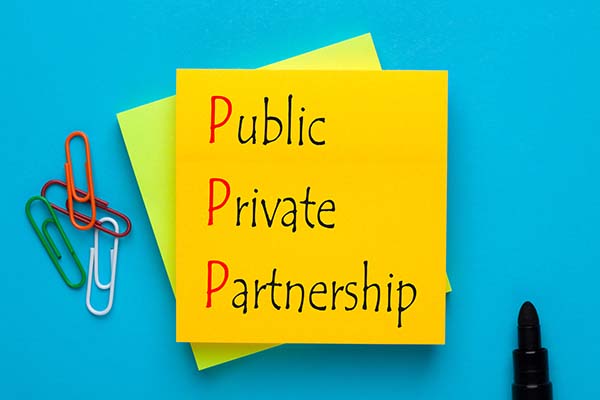
Affordable Housing: The way that affordable housing gets built from the ground up is that it’s a public-private partnership.
That’s for companies and institutions like Bank of America or Wells Fargo, people that don’t necessarily want returns or aren’t return-driven. They’re looking for a tax incentive. They purchase these bonds in order to have those tax breaks. If you got 50% coming from a bank and you got the equity being done from an institution that isn’t necessarily looking for that much of a return, now you’re able to offer housing at an affordable price because you’ve been able to construct this project for relatively minor cost compared to market rate.
Your cost of capital is much lower.
The cost of capital is cheaper. That gets it started. The way that gets started is usually with a 30-year plan, but the tax breaks are only going to be for fifteen years. It’s a fifteen-year program and there’s usually a fifteen-year extension. The initial tax credit equity investor or that person, that Bank of America, Wells Fargo, Amazon or whoever is buying those tax credits, they have a period of time where they get their tax breaks. After they get their tax breaks, the tax breaks are no longer useful for them.
These projects are left to the market. At that point, the developer and the tax credit equity person or entity will part ways, and this project will go on the market. That’s where my company comes in. We don’t necessarily do the ground-up construction, but we look to buy existing affordable projects as they’ve come out of that initial compliance period, but they’re still affordable. That’s where we get into the juicy stuff like value-add strategies, being able to go in and re-syndicate them again, and that’s how we profit off of those.
You talked about where it starts from early on. When you are coming in to buy one of these projects that comes on the market, does it have a restriction on it as far as how much rent you can ask and how much rent you can increase? Does it have those rent restrictions on it?
It does.
Does it have any advantages as far as debt that you are going to get on the property because it’s an affordable housing project? Do you get any advantages on debt?
Yes. That’s one of the incentives for this. We’re able to get long-term, sometimes at 35 to 40 years, whereas the typical market rate is 25 to 30 years max. Rates on affordable projects are usually a little bit lower. There’s also some added leverage. Maybe there’s a lower debt service coverage ratio, depending on it. Also, with that, you’ve got other entities. You’ve got different state agencies, home loans, CDBG Funds, and nonprofits. You’ve got other people that help to make the capital stack more attractive.
You may be able to layer up some additional funding on top of the bank funding to make these deals work. It’s a national crisis here in the United States. There’s an effort by a lot of people. There are a lot of different institutions that try to help in this area. My company is joining in to do that, but because of that, you get this attractive financing packages. Each deal is different, but we look to put something together that’s going to work.
You’re talking about profit, impact, and investing earlier in your bio as well. Obviously, investors are looking for profit. Another thing that I can connect here is we’re located here in Canada and one of the reasons we invest in the US, particularly in the Sun Belt states, is because of the business-friendly laws and landlord-friendly laws that exist. There is no rent control. We can increase the rent as we see fit. That’s one of the reasons that so much capital is being invested in the US. It’s the impetus for us wanting to invest in the US.
Now, you are talking about a situation or an investment where those restrictions exist. How can you make a profit when earlier on you talked about the business of NOI? We’re in the business of increasing the income the property produces. If you have these restrictions on rent increases or the amount you can charge, how can there still be a margin? How can there still be a profit to be made? How is that profit created with those restrictions?
As with most of the market rate models, you predict some sort of inflation. You may say, “The market is going to go about 3% or 5% every year,” or something like that. The same thing happens in these affordable projects. Even though it’s a fixed income amount, it’s not the same income amount. What I’ve found is that a lot of the developers who built the project are just developers. They’re not multifamily operators. They build a project and then they go to another project.
What we find is a lot of operational efficiencies. The expense column will be way out of proportion to what is required or necessary. You would be astonished, especially having the market rate experience that you have. That’s one way. Also, they don’t always go up. When I say go up, they don’t always go up on the rents every year. They built the project. They got in and the developer got a fee. It’s been eight years since they first bought this thing. The developer might be on autopilot. They’re not necessarily trying to max our rents. They just want to keep it full.
We found that the delta is oftentimes in between what the maximum amount that’s still affordable is, and where the current rents are in that project. Right now, we’re doing a project and it’s got $300 of rental increases while being affordable. You still find those value-add opportunities even within that. Because it’s nuanced or a niche and everybody doesn’t necessarily know about it, there’s less competition in bidding, and then it’s also a highly demanded product.
We bought a project in Houston and 20 or 30 units from a 250-unit building had certain rent restrictions on them. How does that work? Can a part of a building have rental restrictions and not the whole building? It was also expiring. One of our pitches to our investors was, “These units have rent control or rent restriction on them, but it is expiring in a year. We’re going to bring this back to the market, which is $400 per unit without even doing any renovation if we don’t end up going that route.” Talk to us about how that works and maybe explain that.
I forget how you word it. It’s something that I alluded to. The government failed in building housing projects, the ghetto, those properties, and all that stuff. It was a catastrophic failure. Now, they’ve gotten smarter. They realized that concentrated poverty is not the route to go. What you purchased is probably some tax incentive from the original developer or someone in that process. They said, “Carve out 25% of this project and leave it for affordable tenants, and we’ll contribute to the project and sell them out.” They probably got an equity check for that. It’s for a duration of time.

Affordable Housing: Concentrated poverty is not the route to go.
Now, you’re buying it and it’s going to expire. You’re going to take it back to the market. That’s the way that they get creative in order to make it happen out of a market-rate project. We’re not going to do the whole thing. We’ll just do a portion of the thing. Sometimes it is the whole thing and it depends on where we are in the market or what area of a town it’s in or something like that.
That’s what I was thinking about originally. I have a question for you. Are there any implications for LP investors when investing in a syndicated deal which is focused on affordable housing?
When you say any implications, what do you mean specifically?
Any incentives or drawbacks. Is it like investing in any other syndication which has its own business plan and an exit strategy? Is there something different that investors should watch out for? The way I see it is these days investors are looking to make an impact, make a change, and make an investment so it can change the world.
If they’re looking at two different syndications, one of them has a housing affordability component to it and the other doesn’t, and even if the returns are a bit lower, in my opinion, it would be a no-brainer for investors wanting to invest in affordable housing, which has an affordable housing component and helps others. Is there something else they should watch out for? Are there negative implications for LP investors investing in affordable housing? Is it longer terms? Is exit strategy more difficult? Talk to us about that.
It could be longer term, but not necessarily often. It could be shorter terms as well. I’ll talk about what we’re doing. In our projects with limited partner investors, it looks like typical syndication outside of there being a few different exit strategies. One exit may be a sale and they understand that. The other exit could be another tax credit re-syndication. It’s restarting the clock and bringing in that entity or institution equity partner again.
That’s an advantage because you have a different exit strategy than you would do. It’s different from regular syndication. Is that true?
It’s true. There are multiple ways to win. With market rate, you have that method of winning, but you still have another one. The downside of that is in order for that to happen, we’ve got to get state approval. State approval is not guaranteed. There are applications and fees involved. Those are some of the downsides, as well as compliance. There’s a whole lot of paperwork that has to be done in order to get these projects approved. There is also paperwork from the tenants.
People can’t make too little, which is a good thing. You can’t not have any income and live in our apartments, but you also can’t make too much. You can’t make $250,000 and rent an affordable house. They try to reserve it and restrict it to income for the people who need it. That could be a potential downside.
Some of the upsides are that we buy these projects. Mind you, you have market rates and affordable housing projects. The market rate maybe $180,000 a unit. It’s what the market is. What we’re coming in here on our cost basis on these projects oftentimes is way less, sometimes in half. You may get $80,000 a door or $120,000 a door. The market is much higher than that.
You’ve probably seen this. Once the clock expires, the value of the property goes up tremendously. As you get closer to that expiration, every year it gets a little bit juicier for that end buyer. There are only five years left. Now, it’s worth this. There are only two years left. Now, It’s worth even more. We naturally buy it at a very low cost per unit.
Right now, our project is crazy. It’s in Atlanta and it’s less than $65,000 a door which is unheard of. As these tax credits expire, that in-unit buyer looks at it and says, “It’s a ’95 build. It’s a 2000 build,” or whatever. The market rate is going to be a lot higher. We inch closer to that market profit margin as the project goes on. That’s a benefit.
Another is demand. We’re looking for police officers, school teachers, retail workers, or people with jobs. I don’t want to say, poor people. I don’t want to categorize anybody because part of my life, I was poor myself. We cater to people who are working or who have jobs, but they can’t afford to spend so much of their money there. By doing that, our tenant base is looking for our product. What we have is natural pent-up demand because those rents were $400 less than what the market rate was in the same building.
Our tenants see the same thing, “If I go live somewhere else, it’s $400 more.” By having that baked in, you get longer tenants and higher occupancy rates. You also got the same things as the market rate. You can still leave and evict people. They’re not required to stay there. “You don’t want to live here or you don’t want to follow the rules, you can go try to find another place to live, but good luck.” We use all that to our advantage.
You don’t have any eviction restrictions when a tenant comes in. Affordable housing is basically about a person has to make below a certain threshold of income to be able to come and live in one of these communities, and then they have to spend 30% of their income on rent. What happens if there is a deficit there? What happens if 30% of their income is less than the rent? Does the government step in and pay the difference?
They can do that, but it’s not required on our part. This is where Section 8 can come in for the person. They may say, “I can contribute $1,000 a month towards my rent.” Maybe we’re renting for $1,200, $1,300 or something like that. That other $300 may come from Section 8 if we choose to accept them, but it’s our choice as property owners. You can accept them or cannot accept them. If they don’t behave well or whatever, you can evict them.

Affordable Housing: It’s our choice as property owners to accept or not accept tenants. And if they don’t behave, you can evict them.
It operates well. You see how there’s demand there for people who are saying, “I want to be able to live in a nice place.” That’s one of the differentiating factors. It is that because it was built in a certain way and they’re not that old comparably, they would have to live in a C-class neighborhood for the same rent. Whereas we could offer a B and, in some cases, A-class properties for that same affordable price. They’ll like, “I want to live here.” This is a better situation for the tenant.
I’d like to go back to something that you mentioned before. We mentioned in this day and age, investors aren’t looking for profits, but also for impact. Asking the question, “How is my investment helping change the world?” That’s common that we hear nowadays from investors. My question for you is this. Are you targeting investors who are looking for impact investing?
Yes and no. I understand we live in a capitalist society. I’m personally doing this because I’m connected to it. Growing up, I lived in some affordable housing projects. I spent the majority of my life being a tenant that was more concerned with the cost of living than I had been an investor. There’s a part of me that wants to do it because my heart is there. At the same time, I understand that these projects don’t work unless you can turn a profit for people who invest in them. Charity is charity and investments are investments.
We look to combine both of those so that you’re able to say, “I’m making an impact but I’m also going to make a return.” We had conversations where “We are going to get another equity partner in two years.” “Yes, I am aware that you would love to have the tax breaks for the next five years or longer but bear with this. We’re going to return your money faster and try to 1031 it into something else.”
It may come to a case where we’re going to keep properties a little bit longer, but we feel like this model and understanding what it is, in my opinion honestly, is the next true safe haven for capital. Why? It’s because affordable housing isn’t going anywhere. You’re taking real estate that’s already there, but you’ve been able to insulate it for market impacts. If the market goes crazy, affordable housing isn’t going crazy. There’s not enough of the product there. We can’t build enough affordable products for the people who need them. If you’re placing your capital into an affordable housing project, you feel like you’re not going to lose money. We may not kill it or whatever, but it’s going to be safe, consistent, and returned.
Are there tax advantages to LP investors that invest in affordable housing aside from tax advantages that exist with depreciation and other advantages that exist in syndication models?
When it comes to taxes, yes and no. If we don’t decide to work with another equity partner, we will do cost segregation and we’ll take complete advantage of all the tax breaks like any other real estate. No matter what we do, we still get tax benefits. You still get depreciation. The downside is if we are going to work with an equity partner.
Your audience may ask, “Why would you work with an equity partner? Why would they do that?” When they get these projects ready for the next fifteen-year period, they usually change everything. They do what you call a physical needs assessment. They look at every item or component of an apartment complex. If it does not have a shelf life of fifteen years or over, they’ll replace it. There will be new roofs, new HVACs, windows, doors, appliances, and whatever. It gets completely new makeup. That’s better for the tenants that live there and for the long-term of that equity partner.
When it goes to cost seg, they get the cost segregation benefits of doing it because they do such a significant rehab. We don’t do a cost seg because we’re like, “We’re only going to be in this for two years. It doesn’t make sense. We’re not going to be able to recoup the money of the cost seg in such a short period of time.” Usually, on those projects, we aren’t at that point putting a lot of capital into redoing the property because we know we’re going to exit in a relatively short period of time.
I have a somewhat difficult question. I don’t think it’s going to be easy for you to answer it. You have two communities next to each other built in the exact same year, in the same exact neighborhood, literally next door to each other with the same number of units. They’re identical. One of them is affordable housing and the other one is not. What is the price difference between affordable housing and standard building? Is there a common ratio that you guys go by which is usually 25% lower or X amount of percent commonly lower? Is it case by case situation and what have you?
It’s going to be a case-by-case situation. The way it’s going to break down, it’s still NOI. In your scenario, you had a $400 deficit between the market rate and affordable housing. It’s the same numbers. We’re going to look at NOI based on $400 less. What doe that work out in the cost per unit? The way that we profit off of that is as those restrictions get closer to expiring, we can now go back and realize that $400 deficit in the NOI. It’s a larger apartment complex. There’s more money to be had, so bigger exit.
Both NOI approach. You still got the loss to lease, but in the case of affordable housing, your loss to lease is not to market. It’s what the allowance is for that particular community. There still could be a way where you can increase the NOI from that restriction. Rather than it being market, it is the restriction set by the government for that particular community.
Correct.
Why don’t we switch the conversation to self-development? You are a Marine, so that’s pretty much as a self-developed human being as it gets. If you could talk about how your military background helped you in your real estate career.
I started very early. It was right out of high school when I went into the Marine Corps. It gave you those things of being responsible, being a man of your word, and doing what you say you’re going to do. Mainly, it’s making the core principles of who you are and shaping you as a person. I think that it is rare. It amazes me the number of people that I talk to that simply don’t do what they say they’re going to do. Being able to have that be part of your characteristics, people are able to pick up on that. Especially when you’re doing something like raising capital and operating projects, you want to have that reputation.
Be responsible, be a man of your word, and do what you say you're going to do. Click To TweetOn the self-development topic, for investors who want to scale their business or get into real estate syndications, what would be your advice when it comes to coaching or other educational resources?
I’m big into that. I put a lot of thought into it. When I look over my life, there was nobody in my inner circle that was an apartment investor that was wealthy or a 7-figure or 8-figure earner. None of that. The only reason I’ve learned what I have learned is that I was willing to invest in myself and pay somebody else to show me.
Over the course of my life, looking at that, now it’s the biggest life hack you could possibly make. The typical educational system of going to college is dwindling fast where you’re not finding value in that. At the same time, you can get real training from a real person who has done something that you want to do. It’s a no-brainer if you want to get X results. I’ll love that model and it’s probably something I’m going to continue to do for the rest of my life.
I’ve been to some of the meetups or events that you host. It’s very informative. I will put the link to that because you help educate others, as well as receive education yourself. I’m thinking about possibly putting a certain portion of our portfolio into affordable housing. We’ll be on a call with Jason to discuss how to collaborate and co-syndicate. Let’s get to the next segment of the show.
Jason, the ten championship rounds to financial freedom, so whatever comes top of mind.
Let’s do it.
First question, who was the most influential person in your life?
I don’t know if it’s even anyone that is alive. I would probably say, Jim Rohn. I listened to his videos. I got teared up when I found out he was dead. I listened to so many of his videos. I was like, “Who was this guy?” He did a good job of being a great orator, but being able to simplify life and give you principles that you can take along your journey.
Next question is, what is the number one book you’d recommend?
It’s The Alchemist. Can I give two?
Yes.
The Alchemist is more like a framework. It’s a great story and a fun read. It’s value-packed. I would also say The Science of Getting Rich. It is more practical, but it takes accomplishing goals and creating wealth and boiling it down to a science, “This is step 1, step 2, and step 3.” It’s a quick read. I like books that I can get fairly quickly.
The Alchemist is my mom’s number one favorite book. I haven’t had a chance to read it, but my mom has been recommending that book to me for years.
Next question, if you had the opportunity to travel back in time, what advice would you give your younger self?
I would say, “Don’t take incremental steps. Find out what you want to do and go do that immediately.” It’s one of those things I was taught. “Grade 1, grade 2, grade 3, you got to do this,” and when I’m trying to think about my life, “I’ll do this. I’ll make that step.” You’re still trying to graduate to certain grades before you do stuff. The quickest way to get there is to go directly to that thing and figure it out. It’s a shortcut in your life to get to where you want to go.
Next question, what’s the best investment you’ve ever made?
I’m going to be a little different. I could talk about projects, what we’ve done, equity multiples, and that sort of thing, but I would honestly say that the best investment I’ve made has been an investment in me. If you look at what I’ve paid other people over the course of time and what that has returned to me in my life, it’s the best one. Nothing has ever compared to that.
What’s the worst investment you’ve ever made, and what lessons did you learn from it?
I’m in the worst investment I ever made right now. It is a trucking business. I had a friend and we were doing Turo. It’s a car-sharing app. That was going well and we said, “Let’s scale this thing and go buy some semi-trucks right now. We’re going to get sexy with it.” We bought a couple of semis and it has been a disaster. We didn’t know what we were doing. We did not have a coach. We had enough knowledge to go do it and be dangerous, and it was dangerous. I’m paying for it.
I’m sorry to hear it.
On the surface, it sounds like a good business idea, Turo for semi-trailers and semi-trucks.
Turo was the business model that we did at first. That’s just cars. Semi-trucks are a whole other business. You got to be efficient and dialed in.
Next question, how much would you need in the bank to retire today? What’s your number?
I’m reverse-engineering it right now. I want to say $12 million.
You could do passive income as well.
That’s what I’m doing. Basically, I’m doing the math. Let’s call it $10 million. If I did $10 million, 8% annually is $800,000, I can live off that. That would be on the low end.
As apartment investors, we’re always thinking about passive income.
You could live off that.
If you could have dinner with someone dead or alive, who would it be?
A person that comes to mind was Ashan Guru I like his teachings. I could ask him a lot of questions and get his perspective on them. He’s one that sticks up.
If you weren’t doing what you’re doing now, what would you be doing now?
I would be hustling somewhere. One thing I want to self-identify myself is a very discontent person. If things aren’t going the way that I like them to, then I’m almost willing to do anything to make that change. I’m betting it all, working like crazy, or doing something that most people won’t do. If I was not doing this, I’ll found some contentment in doing it. I would probably be in something else that I wasn’t content with, and then I would either find success somewhere else or I’d be squirming like hell to find it.
If things aren't going the way that you like them to, then be willing to do anything to make that change. Click To TweetOne thing about syndication is there are so many moving components. It always keeps you sharp and on your toes because you’re dealing with investors, bringing investors, and servicing your investors. You’re looking at deals, underwriting deals, due diligence, and all that fun stuff. You got those two components and now you got to execute the business plan. It’s the business that takes all your attention and focus.
My favorite question, book smarts or street smarts?
Streets, obviously. That was an alley hoop. What’s the saying? An ounce of doing is worth more than a pound of theorizing. If you got to do stuff and figure it out, street smart is going to get you further.
An ounce of doing is worth more than a pound of theorizing. Click To TweetIt’s going to get you there. August is writing that one down. Last question, if you had $1 million in cash and you had to make one investment now, what would it be?
I want to put it with Jason. I’m going to bet on a winning horse. That sounds very arrogant, but it’s a reality. What can I do in order to grow either something that I already invested in or an investment I want to make because I feel like I’ll do well with it?
Jason, what’s the best way that people can reach you?
If you go to JasonStubblefield.com, there are some links there. It’ll take you to the Facebook group. I share out a lot of information and content there. Also, you can get to our website if you want to make investments and see some of the investments we’ve made, but JasonStubblefield.com is the hub for both of those and takes you to where you want to go.
I appreciate your time and transparency. I appreciate all the knowledge you’ve bestowed upon us. Have a wonderful day. Have a wonderful holiday.
Thanks, Jason. Happy holidays.
You too. Thanks for having me.
